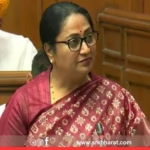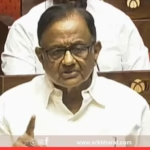India’s booming sports industry has reached a significant milestone, with its total economic value now estimated at £38.84 billion. According to recent market analysis and economic forecasting, this number is poised to nearly double by 2027, reaching an estimated £72–75 billion, driven by a combination of corporate investment, media rights expansion, grassroots development, infrastructure growth, and rising fan engagement.
The current valuation puts India among the top emerging global sports markets, signaling an economic transformation where sports are no longer just a passion but a massive contributor to GDP, employment generation, and global brand visibility.
Key Drivers Behind India’s Sports Economy Boom
India’s sports economy has become increasingly diversified and dynamic, with multiple sub-sectors driving value creation:
| Segment | Current Estimated Value (£ Billion) | Projected 2027 Value (£ Billion) |
|---|---|---|
| Sports Media Rights | 7.8 | 14.6 |
| Sponsorship & Advertising | 8.4 | 16.3 |
| Sports Infrastructure | 6.7 | 13.5 |
| Grassroots & Academies | 2.1 | 4.2 |
| Merchandising & Licensing | 3.3 | 6.1 |
| Ticketing & Live Events | 1.8 | 3.4 |
| Esports & Fantasy Gaming | 4.2 | 9.7 |
| Athlete Management & Wages | 4.3 | 8.9 |
| Other Ancillary Services | 0.94 | 2.3 |
The IPL and Franchise Model: Leading the Revolution
India’s flagship cricket tournament, the Indian Premier League (IPL), continues to serve as the central engine of the country’s sports economy. In 2024, the IPL alone generated over £10 billion in economic activity, spanning broadcasting rights, merchandise, tourism, and local employment. With new franchises entering disciplines like football (ISL), kabaddi (PKL), and women’s cricket, the franchise model has replicated its success across various formats.
Broadcasting and Digital Media: The Content Goldmine
Sports content is now the crown jewel for OTT platforms, broadcasters, and digital streaming services. The total value of sports broadcasting rights in India has grown at a CAGR of over 12% over the last five years.
| Platform Type | Share in Media Rights Revenue | Key Players |
|---|---|---|
| Television | 55% | Star Sports, Sony, Sports18 |
| OTT & Streaming | 35% | JioCinema, Hotstar, FanCode |
| Social Media/Other | 10% | YouTube, Meta, Twitter/X |
The integration of AI analytics, fan engagement tools, live data feeds, and immersive viewing experiences has led to higher advertising value and extended user retention, making digital consumption the future core of sports monetization.
Esports, Fantasy Leagues, and Gaming: The Youth Anchor
India’s young and digitally-savvy population is fueling exponential growth in esports and fantasy platforms. Over 500 million people are active users of gaming or fantasy sports apps, with platforms like Dream11, MPL, and Gamerji contributing billions in microtransactions and advertising revenue.
Esports tournaments now boast prize pools rivaling traditional sports events, with players becoming celebrities and influencers. This niche is expected to reach £10 billion by 2027, up from the current £4.2 billion, becoming one of the largest sub-sectors in India’s sports economy.
Government Policy and Infrastructure Push
Central and state governments have begun prioritizing sports development as part of broader economic planning. Initiatives like Khelo India, sports academies, and new policies on public-private partnerships (PPP) in stadium development are enhancing the talent pool and physical infrastructure.
| Key Govt Initiatives | Description | Impact |
|---|---|---|
| Khelo India Scheme | Grassroots talent development | 8,000+ athletes supported annually |
| Fit India Movement | Public health and fitness campaign | Increased school & college sports |
| Sports Infra Tax Incentive | Tax relief for private investment in sports facilities | Over £2 billion infra investment |
| National Esports Policy | Recognition of esports as a sporting discipline | Inclusion in Asian & Olympic games |
Employment and Economic Multiplier Effect
The sports industry has become a significant job creator, particularly in urban and semi-urban India. The employment generated spans across coaching, media, event management, merchandise, sports medicine, and analytics.
| Job Sector | Estimated Jobs (2024) | Estimated Jobs (2027) |
|---|---|---|
| Coaching & Training | 110,000 | 185,000 |
| Event Management & Ops | 70,000 | 130,000 |
| Broadcasting & Content | 55,000 | 95,000 |
| Gaming & Tech Platforms | 85,000 | 180,000 |
| Sports Marketing & PR | 40,000 | 75,000 |
| Total | 360,000 | 665,000 |
This multiplier effect also impacts hospitality, tourism, and transportation, with major tournaments contributing millions in indirect revenues.
Women in Sports: Economic Participation Rising
The rise of women-centric leagues like the Women’s Premier League (WPL) in cricket and increased representation in Olympics and Commonwealth events is boosting female economic participation in sports. Corporate sponsorship for women athletes has grown by over 50% year-on-year, creating a more inclusive and balanced ecosystem.
India as a Global Sports Hub: Hosting Mega Events
India’s ambitions go beyond domestic consolidation. With successful execution of events like the U-17 FIFA World Cup, Commonwealth Games, and bids for Olympics 2036, the country is establishing itself as a global host for high-stake sporting events.
This strategy attracts foreign direct investment, infrastructure upgrades, and boosts India’s soft power on the world stage.
Challenges Ahead: Need for Policy Reform and Structural Investment
Despite the explosive growth, the Indian sports economy faces multiple hurdles:
- Lack of standardized data transparency
- Inadequate athlete pension or insurance systems
- Over-reliance on cricket over multi-sport diversification
- Need for sports education integration in school curriculum
- Underrepresentation in rural and tribal areas
Unless these challenges are addressed with a multi-pronged approach, long-term sustainability could be at risk, despite short-term growth trends.
The Road Ahead
By 2027, India’s sports economy is expected to contribute nearly 2.5–3% of the national GDP, up from an estimated 1.3% today. With the perfect convergence of demographics, digital adoption, policy support, and private investment, India is on track to become not just a sporting superpower but also an economic force in the global sports industry.
The future lies in diversifying sports infrastructure, empowering athletes, embracing digital monetization, and building equitable opportunities across genders and geographies. India’s sports economy is no longer a fringe sector—it’s an engine of future economic growth.
Disclaimer: The information presented in this article is based on industry estimates, public data, and projections from market research. It is meant for informational purposes only and does not constitute investment or financial advice.











